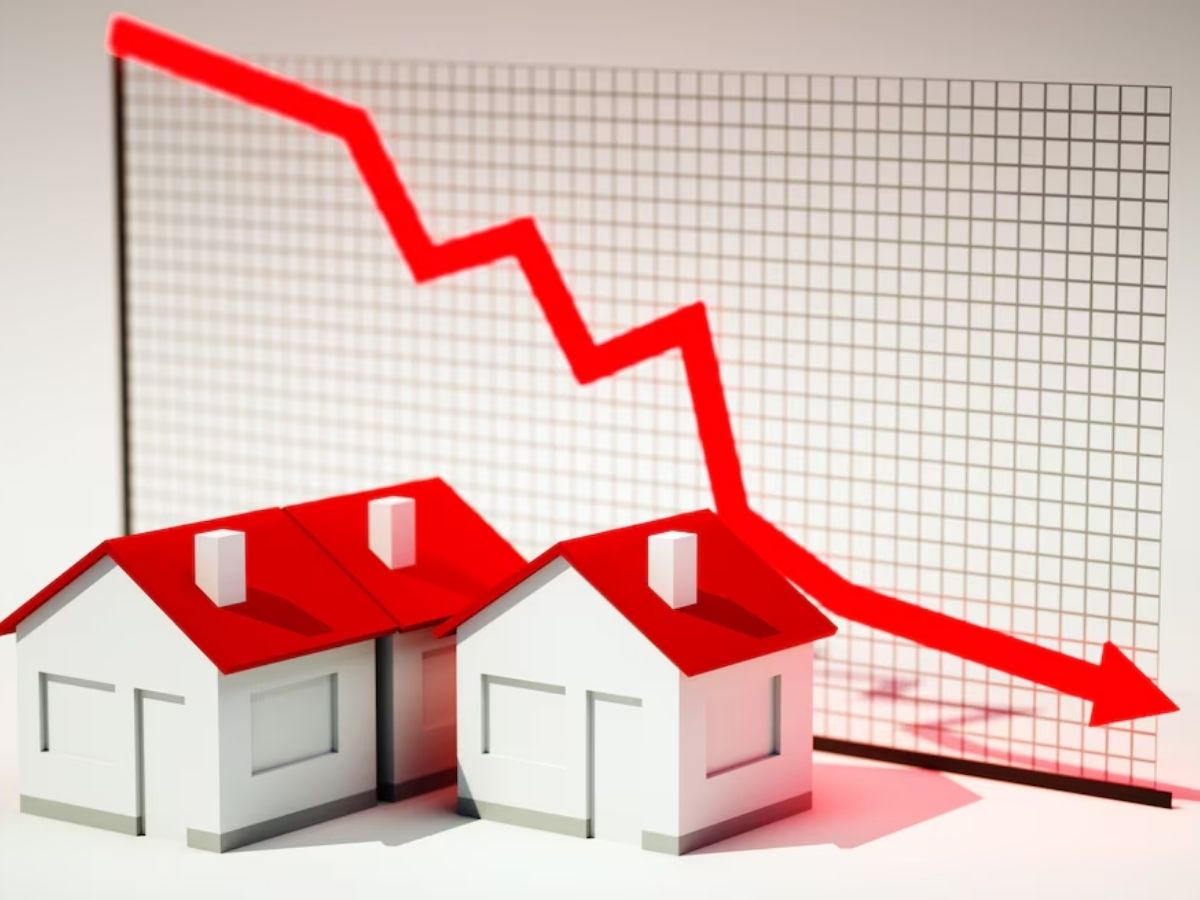
The Surprising Reason Mortgage Rates Might Sink
The trajectory of American mortgage rates, long stuck in a narrow band of around 7%, may soon depend on an unlikely variable: trade policy. A tiny fall in the average 30-year fixed mortgage rate to 6.64% this week, the second consecutive weekly dip, gives some hope for hopeless homebuyers. Yet the forces shaping its future path are anything but simple.
Tariffs, Treasuries and Transmission Mechanisms
The immediate catalyst for change comes from Washington. President Donald Trump’s latest round of tariffs provoked a nose-dive in 10-year Treasury yields as investors fled to safer assets, yanking up prices (yields on Treasuries are inversely correlated to prices). Since mortgage rates track such yields, the initial market reaction suggests possible relief ahead.
Yet the Federal Reserve’s reaction function complicates matters. The central bank must now weigh the tariffs’ inflationary impulse against their growth-dampening effects. Early estimates suggest the new levies could add 0.2-0.4 percentage points to core inflation, according to Wall Street analysts. That creates a policy trilemma: ease to support growth, hold to contain prices or risk falling behind the curve on either front.
Market Expectations Versus Fed Forward Guidance
Financial markets have made their bet clear. Futures pricing now implies four 25-basis-point rate cuts in 2025, beginning in June — a more aggressive easing path than anticipated just weeks ago. This repricing reflects burgeoning worries that protectionist measures could shave 0.5-1.0% off GDP growth this year, based on historical trade war effects.
However, the Federal Open Market Committee’s recent communications strike a more restrained tone. Chair Jerome Powell noted tariffs could have “persistent” inflationary effects, while Governor Adriana Kugler stressed anchoring long-term inflation expectations. That dissonance between market pricing and Fed rhetoric recalls similar disconnects during previous policy transitions.
Housing Market in the Crossfire
The residential real estate sector is caught in this macroeconomic crossfire. Even though new listings leapt 10% year on year in March, the strongest showing for the month since 2022, transaction volumes remain subdued. The National Association of Realtors’ pending home sales index has tanked for three consecutive months, suggesting demand-side fragility despite growing supply.
Three scenarios playing out:
- Dovish Fed Response: If policymakers prioritize growth concerns, mortgage rates could retreat to the low-6% range by Q4 2024
- Hawkish Hold: Persistent inflation fears may keep rates rangebound between 6.5-7%
- Policy Error: Delayed easing could aggravate housing market weakness, particularly in price-sensitive segments
Structural Considerations and Historical Parallels
The current juncture bears similarities to the 2018-2019 period, when Fed tightening collided with Trump’s first major tariff offensive. Then, as now, 10-year yields fell sharply over growth fears, eventually prompting a policy U-turn. Today’s inflation backdrop is markedly different, however, with core PCE still running at 2.5% versus 1.9% in early 2019.
Moreover, the housing market is dealing with unique constraints. Even if rates moderate, affordability remains stretched by historical standards. The median mortgage payment consumes 35% of the median household income, compared with 29% in the 2010-2019 period. This suggests any demand response to lower rates may be muted without concurrent price adjustments.
Forward-Looking Implications
The coming months will test the Fed’s ability to handle conflicting signals. Market participants should monitor:
- Tariff implementation timelines and possible retaliatory measures
- Core services inflation trends, particularly shelter costs
- Mortgage spread behavior, which remains elevated by pre-pandemic standards
While the path of least resistance appears to favor gradual rate declines, the risk of policy miscalibration is non-trivial. That translates to continued uncertainty for homebuyers — the only certainty in today’s unusual economic crossroads.



